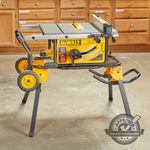Lumber Prices Are Down, So Why Are Homes Still Less Affordable?

Lumber prices have dropped, but homes are still prohibitively expensive. Here's why.
According to a new report from the National Association of Home Builders (NAHB), housing affordability in the United States in the second quarter of 2021 fell to its lowest point since 2012.
Just 56 percent of the new and existing homes sold from April to June were affordable to families making at least $79,900, the U.S. median family income. This marks a steep drop from the first quarter of 2021, when 63 percent were deemed affordable.
This spike in housing prices comes at a time when lumber prices have fallen drastically, normalizing somewhat after hitting historically high levels in the earlier part of the year. But while a drop in lumber prices should lead to a drop in home prices, it hasn’t manifested itself in housing affordability just yet.
“As the price declines began grabbing headlines, the price of lumber packages quoted to builders held at record highs,” David Logan, senior economist at the National Association of Home Builders, told CNBC. “In economics jargon, prices paid by builders — or ‘street’ prices — were ‘sticky.’ ”
That means home builders are still paying top dollar from suppliers who purchased their inventories earlier in the year, when prices were still high. Lumber suppliers can’t afford to sell their inventory at prices lower than they paid for it, creating a logjam of high-priced wood. And with demand for housing and housing materials holding strong, suppliers have no reason to drop the prices.
On top of that, other kinds of lumber like engineered wood and oriental strand board (OSB) have seen their prices increase just as softwood lumber prices have fallen.
“Runaway construction cost growth, such as ongoing elevated prices for oriented strand board that has skyrocketed by nearly 500 percent since January 2020, continue to put upward pressure on home prices,” said NAHB Chairman Chuck Fowke. “Policymakers must address supply chain bottlenecks for building materials that are raising costs and harming housing affordability.”


